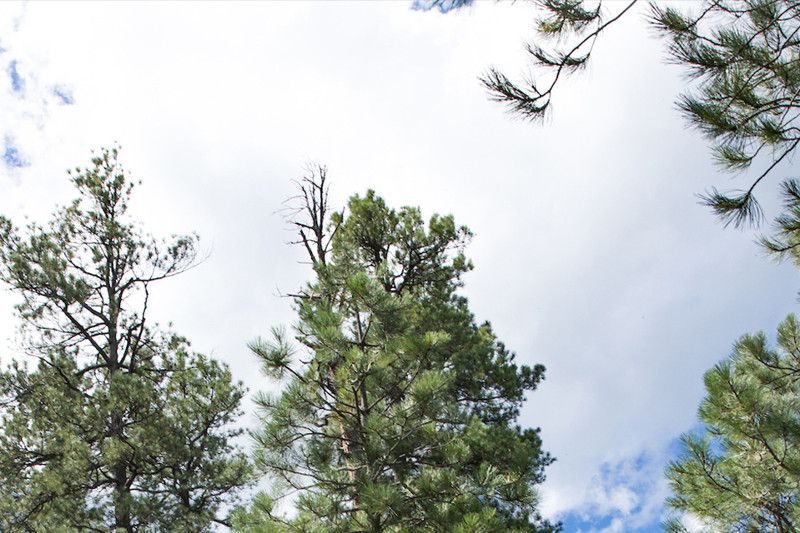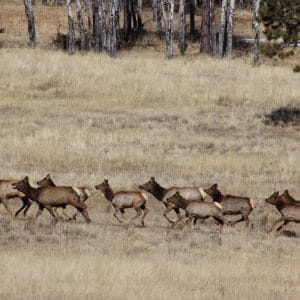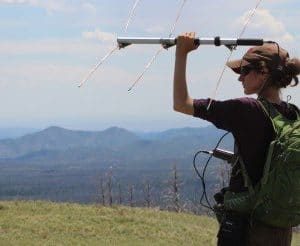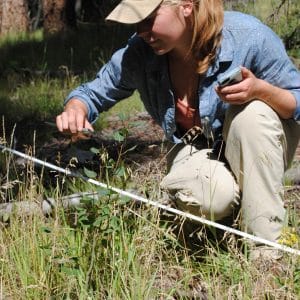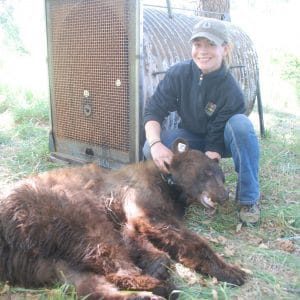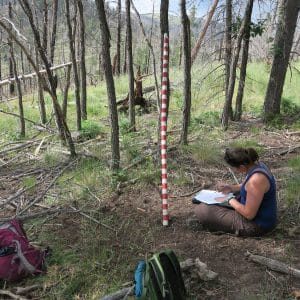Large Mammals, Wildfire, and Forest Restoration in the Jemez Mountains
Non-federal partner: New Mexico State University
Federal partner: National Park Service and US Forest Service
Location of project: Jemez Mountains, New Mexico
Principal investigator: Gary Roemer and James W. Cain
Top middle: PhD student Sharon Smythe conducting telemetry for radio-collared elk and mule deer on the Valles Caldera National Preserve, New Mexico
Top right: Hallie Walker measuring woody plant density in the Jemez Mountains, New Mexico
Bottom left: Former MS student Sarah Kindschuh with a black bear fitted with a GPS collar to monitor movements and habitat selection in the Jemez Mountains, New Mexico
Bottom right: Rachael Wiedmeier collecting vegetation monitoring data in the Jemez Mountains, New Mexico
Description of project: Decades of fire suppression, logging, and overgrazing have altered the conditions of Southwestern forests resulting in increased densities of small diameter trees and an overall increase in fuel loads. The increase in tree densities has been associated with decreases in biodiversity, reduced habitat quality for many wildlife species, and more frequent and severe wildfires. Catastrophic wildfires in the western US over the past two decades have resulted in an increased need for forest restoration projects designed to restore historic forest structure, plant species composition, and fire regimes. Both wildfires and forest restoration treatments can result in profound changes to habitat conditions for many wildlife species. Therefore, forest restoration plans should be well-designed, based on the best scientific information, and include monitoring and research programs in an adaptive management framework. Numerous large-scale forest restoration projects are underway across the western US and more are likely to be initiated over the next 10-30 years. Given the large landscapes likely to be subjected to restoration treatments in the future, it is critical for state and federal management agencies to understand how wildlife respond to these treatments in order for them to develop effective management plans and to make informed contributions to the design and implementation planning for restoration projects. Our specific objectives are to: 1) assess changes in abundance of key forage species (including mast producing species) for black bears, mule deer, and elk in response to forest restoration treatments and recent wildfires; and 2) determine habitat selection and space use patterns of black bears, mule deer, and elk in relation to forest restoration treatments and wildfires.
Project start/end dates: This project was initiated in 2012 and completed in 2020.
Student support: To date, the project has involved 2 PhD students and 5 MS students from New Mexico State University, New Mexico Highlands University, and Texas Tech University.
